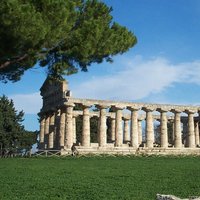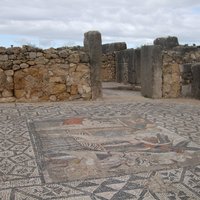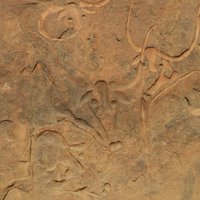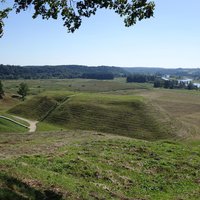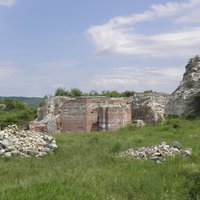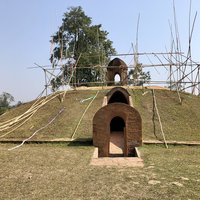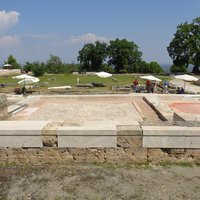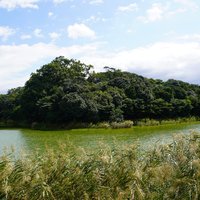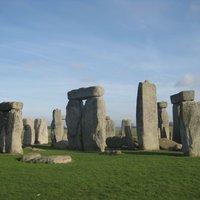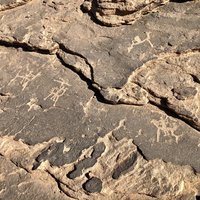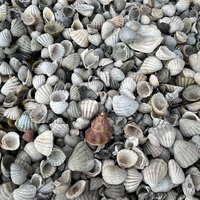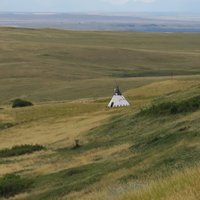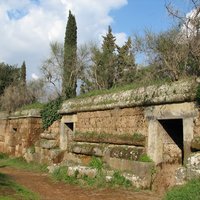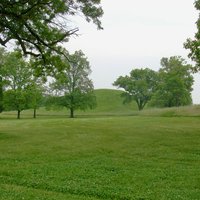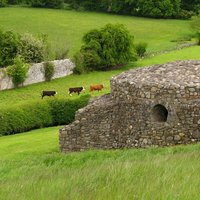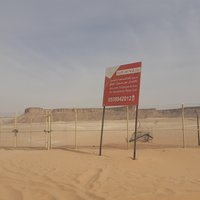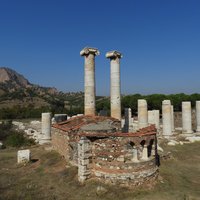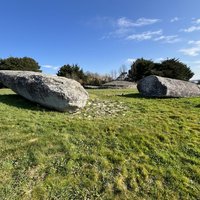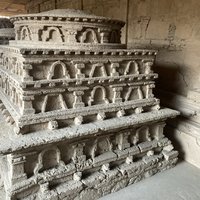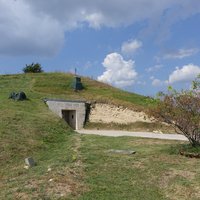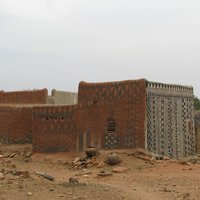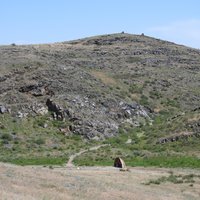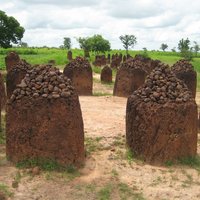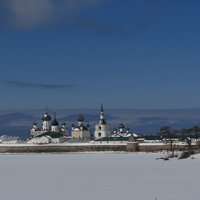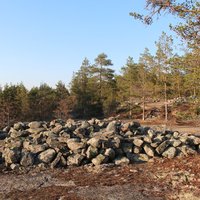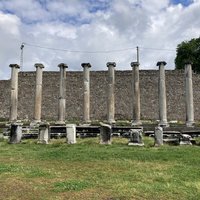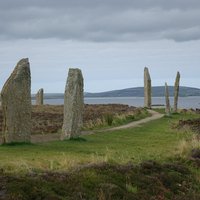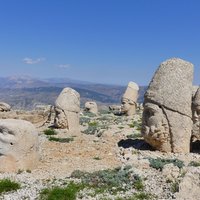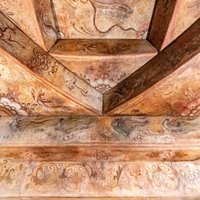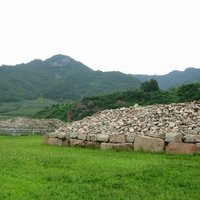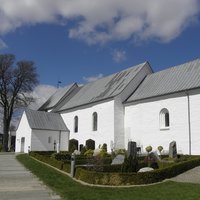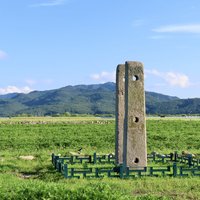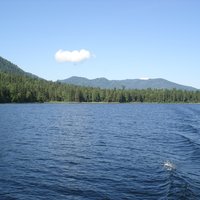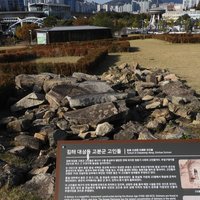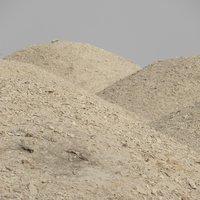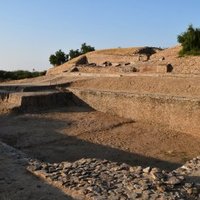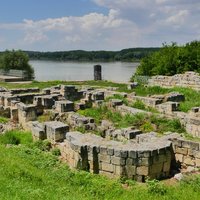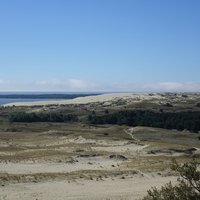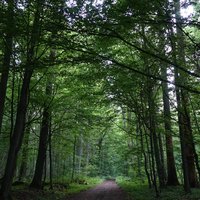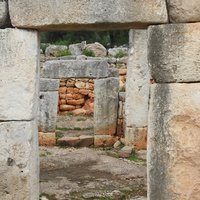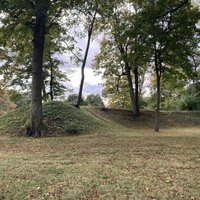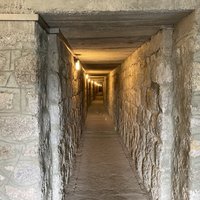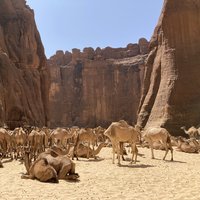Connected Sites
-
La tomba del Principe in Monte Pruno
-
AB: "there is a burial mound dating from the 3rd/2nd century BC"
-
The lowlands have stone tumuli and hearths dating between 6000 to 4000 BCE. (wiki)
-
-
The mausolea of Galerius and his mother are hidden in two tumuli, visible from the main palace
-
"royal burial mounds or "moidams" ("home"-for-spirit")" - "The moidams (...) are created by providing an earth cover over a hollow vault constructed of brick, stone, or earth. The vaults contain the buried or cremated remains of kings and other royal individuals together with grave goods." (Ab Ev)
-
-
"distinctive burial mounds called kofun" (AB ev)
-
Avebury Silbury hill near Avebury (biggest tumulus in Europe), West Kennet Barrow and East Kennet Barrow. Also many smaller ones.
-
Ceramic remains of mid-to later Holocene times occur widely, and are especially common at a series of rock tumuli at Najd Sahi. (nom file p.14)
-
Shellfish tumuli
-
a tumulus where vast quantities of buffalo (American Bison) skeletons can still be found (Unesco website)
-
"The necropolis near Cerveteri (...) contains very different types of tombs", among which "tumuli which often contain more than one tomb". (OUV) – Cerveteri: "Most famous are the tumuli, tombs often containing more than one tomb under an imposing mound." (AB Ev) – "The main necropolis of Tarchuna (...) is the Monterozzi necropolis with some 6,000 tombs, (...) many of which were tumulus tombs with chambers carved in the rock below." (Wikipedia)
-
"The mounds served variously as construction foundations for public buildings and as funerary tumuli." (OUV)
-
-
"The rich archaeological remains reflect the multifaceted lives of the occupants, including (...) the funerary landscape of tumuli and cairns in the valley" - "There are 178 tumuli (or cruciform tombs) and 2,657 cairns at the foot of Jabal Tuwayq" (AB Ev)
-
several Tumuli in Bin Tepe, as burial places for the Lydian kings
-
"A variety of monumental stone structures, such as menhirs, standing stone (or stelae) alignments, stone circles, cairns, and tombs of different types covered by tumuli or simple mounds, were constructed in specific locations, in relation to the topographical features and the spatial and visual interconnections between the megaliths themselves." (AB Ev)
-
"The tombs reserved for dignitaries consist of a cylindrical well, closed with a large stone slab and topped by a low tumulus delimited by a stone wall. They are four-sided in shape. "Ordinary" people's tombs are marked with a simple stone slab, or a cylindrical tumulus for men who have been able to sacrifice a bull during their lives." (Ab Ev)
-
tumulus of Saraikala
-
There have been numerous findings in the tumuli including unique golden adornments and artifacts of metal and clay. (EOEarth)
-
The tomb is covered by a burial mound
-
"Other characteristic symbolic elements of the Royal Court of Tiébélé are located outside the compound. These include the pourou, the sacred tumulus where the placenta of the new-borns of the royal family are buried". (Ab Ev)
-
"A huge number of ancient burials are known on the site. ... the later types consist of mounds (kurgans) of stone and earth built above tombs. The latter seem to date from the Early Iron Age to the present day." (AB ev)
-
"The complexes conserve their integrity in terms of spatial associations of the component circles, individual megaliths and tumuli." (AB ev)
-
over 600 stone burial cairns
-
Stone cairns
-
Ikili tumuli
-
Maeshowe
-
the tumulus at the site, which is 49 m (161 ft) tall and 152 m (499 ft) in diameter (wiki)
See en.wikipedia.org
-
"The best known cultural heritage remains of this kingdom are thousands of tombs, built of stone and covered by stone or earthen mounds. Earthen mound tombs, including many with murals, were prevalent once Koguryo moved its capital to Pyongyang - but existed in other parts of the kingdom as well." - Nomination file
-
"Some of the tombs show great ingenuity in their elaborate ceilings, designed to roof wide spaces without columns and carry the heavy load of a stone or earth tumulus (mound), which was placed above them." - Nomination File
-
-
-
The Pazyryk tombs are Scythian kurgans, that is barrow-like tomb mounds of larch logs covered over by large cairns of boulders and stones, dated to between the 6th and 3rd centuries BCE. (wiki)
See en.wikipedia.org
-
“The introduction of new forms of tombs and the intensification of the spatial hierarchy in the tumuli sites reflect the structural changes experienced by Gaya society during its history.” - UNESCO Description
-
"Six of the selected site components are burial mound fields consisting of some dozen to several thousand tumuli. Together they comprise about 11,774 burial mounds." (OUV)
-
"Six hemispherical tumuli are the most conspicuous features of curiosity and promise in the zone of [the] western necropolis." They surround a "depression representing a buried water body and were believed to be of special significance in terms of their shape, size and location. Two of them (...) have been subjected to archaeological investigation which confirmed their being funerary monuments of exceeding importance and unique character". (Nomination text, p. 223)
-
Carnuntum (ID No 31): "cemeteries along the ancient radial roads, whereby elaborate tomb architecture such as funeral altars, pillar monuments or tomb chapels as well as tumulus tombs were found" (Nomination file, p. 79)
-
500 tumuli were discovered in Kaup
-
184 old Slav burial tumuli from the 10th and 11th centuries have been found (UNEP-WCMC)
-
Torralba d'en Salort in Component C6: "(...) the underground or semi-underground structures like the hypostyle hall (which conserves part of the earthen tumulus that covers the roof)" (Nomination file, p. 443) – "The dolmen of Ses Roques Llises (...) includes a corridor delimited by stone slabs (only the left side slab still exists), a rectangular chamber accessed through a perforated stone slab and the remains of a tumulus (which likely covered the entire tomb) that enveloped the structure."
See www.menorcatalayotica.info
-
Mound City: ".. the highest density of burial mounds of any Hopewell earthwork." (nom file)
-
"Surrounding the Citadel Mound and the Lower and Outer Towns, more than one hundred tumuli – earthen mounds protecting the burials of the ruling class – dot the landscape of Gordion. Their size is variable, from small humps on the ground to large-scale mounds, such as the tumulus known as the Midas Mound" (AB ev)
-
tumuli grouped in large necropolises (AB ev)

